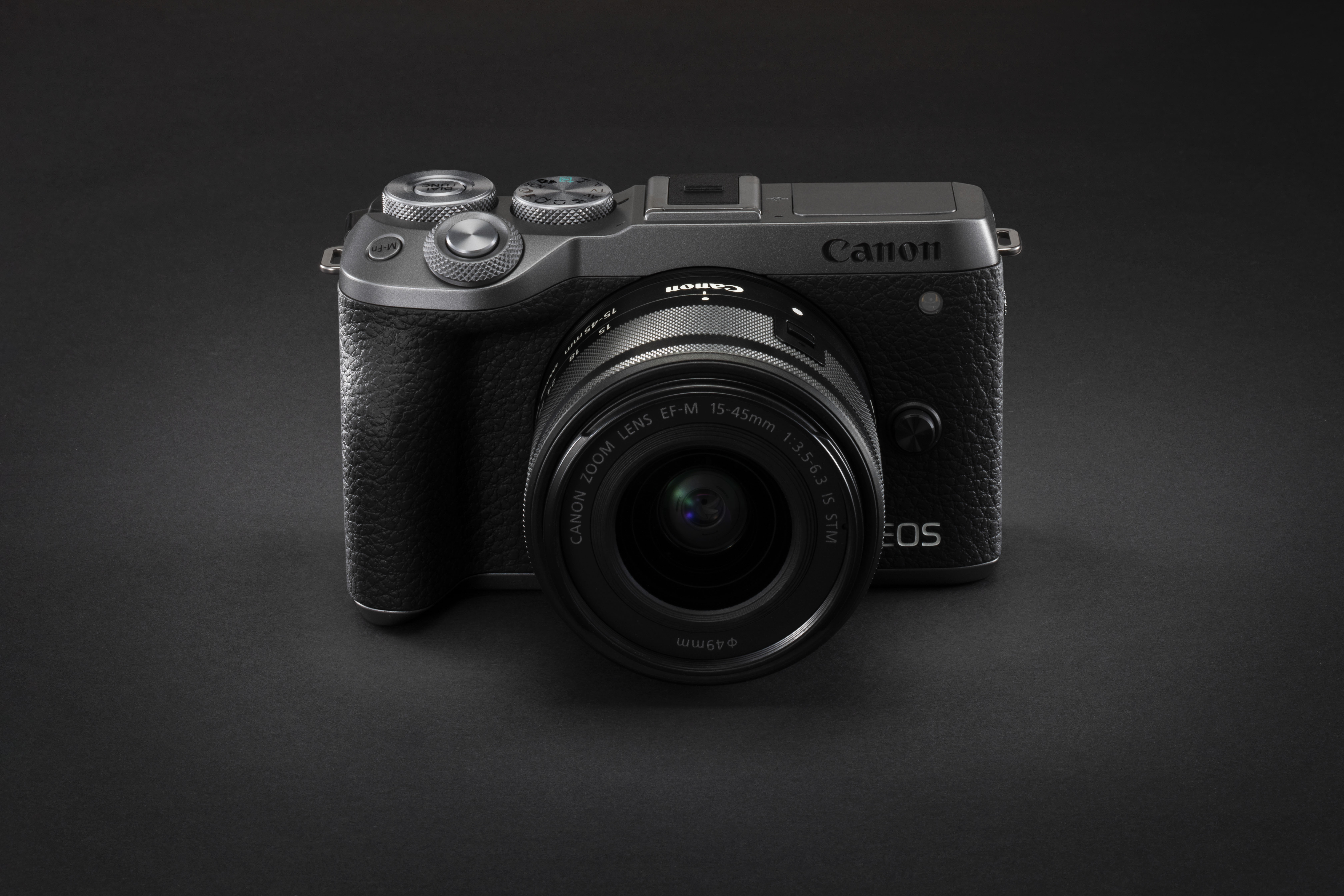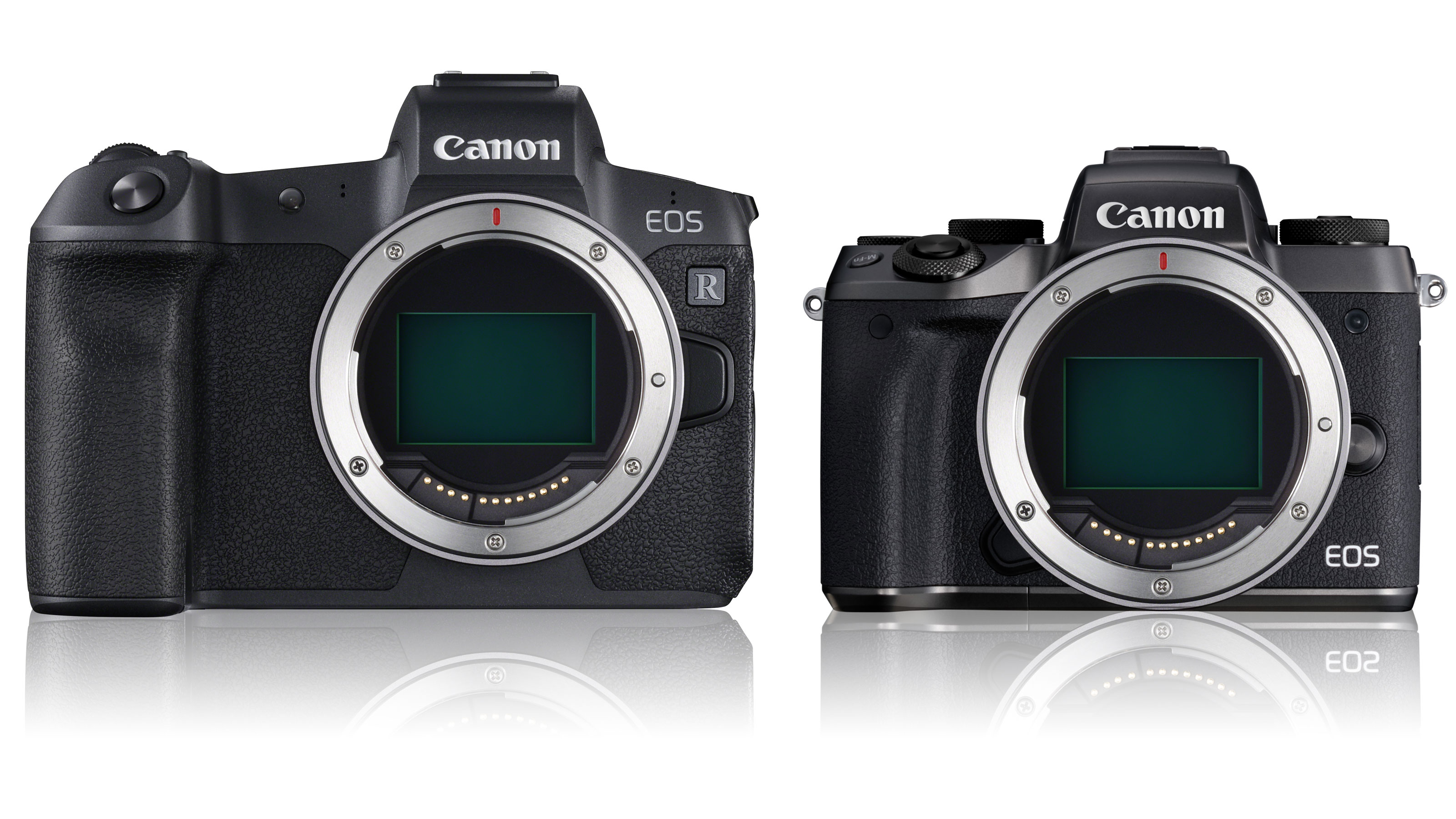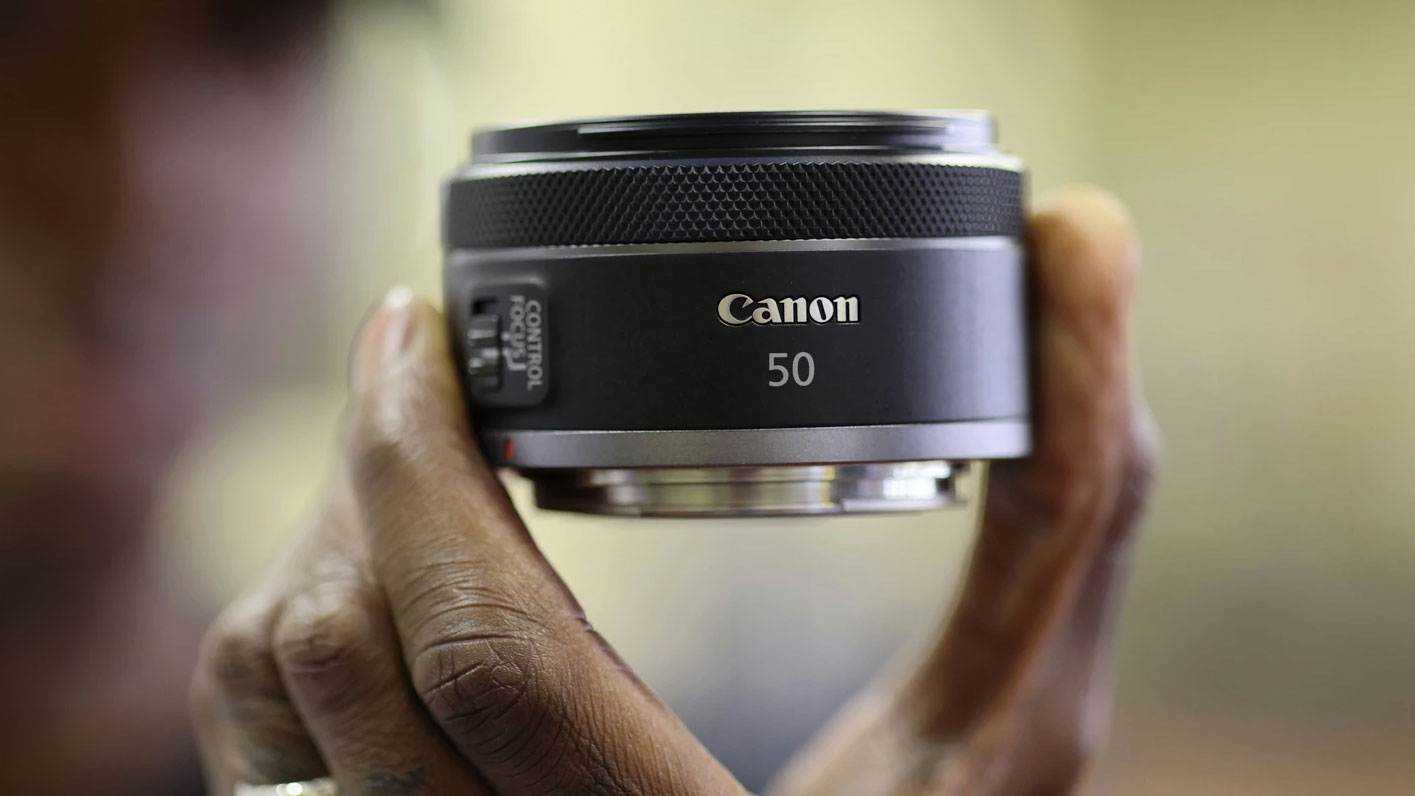I wonder, what if Canon were to simply rebrand EOS M as EOS R-M?
No new cameras, no new lenses, just some crafty badge work?

The Internet is full of Canon EOS R7 rumors, and we’ve already talked about the lens dilemmas facing Canon if it produces an APS-C EOS R range. (It will need to make standard zooms and wide-angle lenses for this specific format – full frame lenses won’t do.)
The latest rumors suggest the EOS R7 will have a 32MP sensor, which is close enough to the 32.5MP sensor in the existing EOS M6 Mark II and EOS 90D to have the ring of truth about it.
So the questions remain: what will happen to the EOS M, and will Canon make new lenses for an APS-C EOS R range?
Canon’s always been resolute in its support for the EOS M, and we’ve seen how long it’s taken (and it still taking) Nikon to come out with DX format Z-mount lenses.
So maybe the solution is simpler than we think. What if this were to turn out to be all about badges and adapters, and nothing more?
Possibility 1: Canon renames EOS M as EOS R-M
Nothing changes, just the badges on the front. The EOS R-M cameras still use the M mount, but they now align in branding at least (and perhaps styling) with the full frame cameras.
The problem here is that you wouldn’t be able to use RF lenses on these smaller bodies. There would be no continuity between these two systems. That sounds like an intolerable situation, but if you think about it, it’s no different to what we’ve got now.
The best camera deals, reviews, product advice, and unmissable photography news, direct to your inbox!
It’s not just Canon. Panasonic has mutually incompatible Micro Four Thirds Lumix G and full frame Lumix S ranges and doesn’t seem bothered by it. Panasonic feels it offers two different solutions for two different needs, and Canon might well feel the same.
Imagine the Canon EOS M6 Mark II with a fancy EOS R-style redesign and badge-work, maybe with an EVF but the same EOS-M mount. It might be disappointing, but it would be a perfectly logical development of the current EOS M system.
Possibility 2: Canon swaps EOS M cameras to RF mount
A tempting thought, but there are a couple of issues. One is that Canon would then need to make some APS-C lenses and would be in the same boat as Nikon. The other is that the flange distances are different, which would kill off all the existing EF-M lenses*.
The EF-M mount has a flange distance of 18mm, but the RF mount has a flange distance of 20mm. If the EOS R7 had an RF mount, it wouldn’t be able to use EF-M lenses because they would be mounted 2mm too far away from the sensor – and the thickness of any EF-M adaptor would just make it worse.
Or would it? Because although the EF-M mount has a shorter flange distance, it also has a narrower diameter – 47mm versus the 54mm diameter of the RF mount.
Would it be possible to make an inset adaptor that fitted INSIDE the throat of the mount and not on the front of it. It sounds like it could be a technical nightmare if you factor in the electrical lens connections, but who knows?
*But here’s another idea. What if Canon were to re-engineer its existing EF-M lenses with an extra 2mm thickness at the flange and an RF mount. It has a ready-made APS-C mirrorless lens range right there, ready and waiting…
That’s no different to what Sigma did with the mirrorless versions of its DSLR Art lenses.
(Im)possibility 3: Canon ships an RF adaptor with rebranded EF-M cameras
This doesn’t seem any easier to achieve technically – and in both cases, you have to assume that if such adapters were possible, Canon would have done it by now.
The problem with this idea is that although the EF-M mount’s shorter flange distance theoretically offers 2mm leeway for an RF adapter on the front, RF optics will be expecting and will have been designed for a much wider lens throat.
Everything around the EOS R7 is speculation – including this
There are lots of rumors, but nothing is known for sure about any new EOS R7, APS-C or otherwise. But there is certainly lots of pressure on Canon to extend its EOS R brand and to do something about the EOS-M, which appears to be just stumbling along in its own little world right now.
But what we do think is that the route Canon takes might not be the obvious one, and that out of our theoretical scenarios above, both (1) and (2) are perfectly possible.
This may not be about new cameras and new camera tech at all. The existing EOS M6 Mark II has already taken the APS-C format as far as it needs go. Canon could just repackage and redesign this camera as an EOS R7 and it would still look and feel cutting edge.
The real question is what Canon does about the lenses.
Read more:
• Canon EOS R7: What we know and what we can expect
• Canon registers two new cameras – is one of them the Canon EOS R7?
• Canon EOS R7 set to be mirrorless replacement for Canon EOS 7D
• Canon EOS R7 teased by exec: "the R series lineup is not yet complete…"
• Canon EOS R7 with APS-C sensor coming in 2021 – but no RF-S lenses?
• Is this REALLY the end of the Canon EOS M system?

Rod is an independent photography journalist and editor, and a long-standing Digital Camera World contributor, having previously worked as DCW's Group Reviews editor. Before that he has been technique editor on N-Photo, Head of Testing for the photography division and Camera Channel editor on TechRadar, as well as contributing to many other publications. He has been writing about photography technique, photo editing and digital cameras since they first appeared, and before that began his career writing about film photography. He has used and reviewed practically every interchangeable lens camera launched in the past 20 years, from entry-level DSLRs to medium format cameras, together with lenses, tripods, gimbals, light meters, camera bags and more. Rod has his own camera gear blog at fotovolo.com but also writes about photo-editing applications and techniques at lifeafterphotoshop.com


